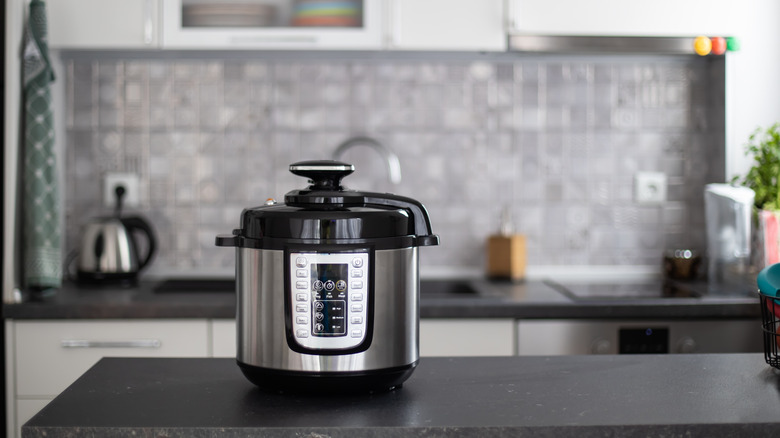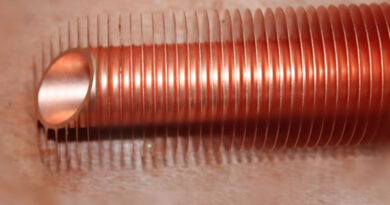6 Risks Associated With Using a Pressure Cooker
These days, it’s impossible to imagine a home or even an industrial kitchen without a pressure cooker. It’s one of those kitchen appliances that has become very popular thanks to its ability to cook food quickly. However, while pressure cookers have made lives easier, it’s also to be noted that they come with certain risks.
If you’re using a pressure cooker at home or work, it’s important that you understand what these risks are and why it’s important to mitigate them. These risks are not just associated with safety but also with the quality of the food being cooked in these cookers.
In this article, we’ll shed light on the risks associated with using a pressure cooker and why you must do all you can to minimize those risks.
#1 Pressure Build-Up and Explosions
One of the most significant risks associated with pressure cookers is the potential for pressure build-up and explosions. If not used correctly, the high pressure inside the cooker can cause the lid to blow off, releasing scalding-hot liquid and food, leading to serious burns and injuries. To prevent this, always follow the manufacturer’s instructions, including maintaining the recommended pressure level, using an amount of adequate liquid, and never overfilling the cooker.
A pressure cooker explosion, although not that common these days, is still something that’s not unheard of. Every once in a while, you’ll come across an incident where a cooker exploded either because it wasn’t being used properly or because it was faulty in some way. The latter situation has led to several lawsuits being filed against pressure cooker manufacturers over the years.
According to TorHoerman Law, around 15 brands of pressure cookers have been recalled over the past few years by their manufacturers as per the instructions of the Consumer Protection Safety Commission. This goes to show why you should also be careful about the pressure cooker brands you buy for yourself.
#2 Steam Burns
Steam burns are another common risk when using a pressure cooker. The steam released when the cooker is opened can cause severe burns if it comes into contact with the skin. To minimize the risk, always release the pressure slowly and away from your face and body. Use protective mitts or gloves to handle the cooker, and ensure that children and pets are kept at a safe distance during the cooking and venting process.
#3 Scalding and Spills
Pressure cookers contain hot liquid that can spill out during the cooking process if mishandled. To avoid scalding accidents, make sure the pressure cooker is properly sealed before starting the cooking process. When opening the cooker, tilt the lid away from you to prevent hot liquid from splashing. Additionally, avoid overfilling the cooker to reduce the chances of spills and potential scalding injuries.
#4 Food Contamination
Improper handling of food and inadequate cleaning of the pressure cooker can lead to food contamination. While a pressure cooker is known to cook food fast, it may not always do enough to kill the bacteria inside. Bacteria can survive the cooking process unless you cook at a high enough temperature. It can also spread if you leave the food inside the cooker for a long time after you’re done cooking.
In order to prevent foodborne illnesses, you must make sure that the cooker is properly cleaned. That means you can leave no food residue inside the cooker once you’re done cooking.
When it comes to cooking, follow the instructions provided by the manufacturer. It will help you thoroughly clean the cooker. Furthermore, the food, once ready, must be stored in airtight containers inside refrigerators. Otherwise, there’s a chance that the safe and small amount of bacteria remaining inside the food will spread and reach unsafe levels.
#5 Pressure Release Accidents
Releasing the pressure from a cooker can be dangerous if not done correctly. Abruptly releasing the pressure can cause scalding steam to escape, leading to burns and injuries. Pressure releasing must also be done following the manufacturer’s instructions. Certain heat-and-eat meals will suggest their own pressure-releasing instructions, in which case you have to decide on a middle ground yourself.
Most pressure cookers these days come with built-in pressure release valves. They should allow you to release the pressure gradually in a controlled manner. Familiarize yourself with such features of your cooker to safely release pressure without accidents.
#6 Overcooking and Food Safety
While pressure cookers are designed to cook food quickly, there is a risk of overcooking if proper attention is not given to the cooking time. Because of overcooking, the food will lose nutrients and also its texture and taste.
Besides, undercooking certain foods, such as poultry or beans, can pose a food safety risk, as they may not reach the required internal temperature to kill bacteria. Always follow recipe instructions and use a reliable food thermometer to ensure that food is cooked to the appropriate temperature for safety and optimal taste.
Using a pressure cooker should be risk-free, but it’s only possible if you follow the right techniques during cooking. Thus, keep these points in mind to make the most of your pressure cooker while ensuring maximum food safety.




